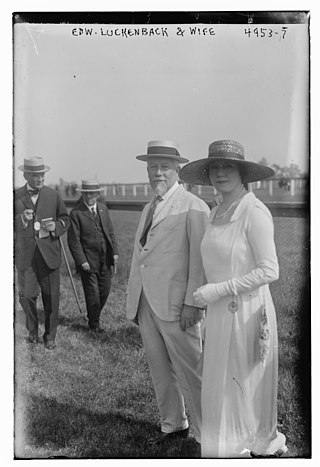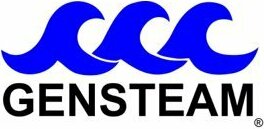Related Research Articles

SS Cuba was a passenger and cargo steamship that was wrecked in 1923 off the coast of California. Her remains are now a wreck diving site. She was launched in Germany in 1897 as Coblenz for Norddeutscher Lloyd (NDL), who owned and operated her until the United States seized her in 1917. The United States Shipping Board took possession of her and renamed her Sachem. In 1920 the Pacific Mail Steamship Company bought her and renamed her Cuba.

SS Absaroka was a steamer, named after the Absaroka Range of mountains in Montana and Wyoming, completed in February 1918 for the United States Shipping Board (USSB) which briefly operated the ship. From 17 September 1918 to 4 March 1919 the ship was commissioned as USS Absaroka with the identification number IX-2581 in United States Navy and operated by the Naval Overseas Transportation Service.

Union Iron Works, located in San Francisco, California, on the southeast waterfront, was a central business within the large industrial zone of Potrero Point, for four decades at the end of the nineteenth and beginning of the twentieth centuries.

USS Hugh L. Scott (AP-43) was a Hugh L. Scott-class transport ship. She was built in 1921 and spent 20 years in merchant service as a passenger and cargo liner. In July 1941 the ship was delivered to the United States Department of War for Army service as the United States Army Transport Hugh L. Scott operating in the Pacific. In August 1942 the ship was transferred to the United States Navy for conversion to an attack transport, served as a troopship in Operation Torch in November 1942, and was sunk by a U-boat four days later. 59 crewmen and soldiers died during the sinking.

SS Munargo was a commercial cargo and passenger ship built for the Munson Steamship Line by New York Shipbuilding Corp., Camden, New Jersey launched 17 September 1921. Munargo operated for the line in the New York-Bahamas-Cuba-Miami service passenger cargo trade. In June 1930 the United States and Mexican soccer teams took passage aboard Munargo from New York to Uruguay for the 1930 FIFA World Cup. The ship was acquired by the War Shipping Administration and immediately purchased by the War Department for service as a troop carrier during World War II. Shortly after acquisition the War Department transferred the ship to the U.S. Navy which commissioned the ship USS Munargo (AP-20). She operated in the Atlantic Ocean for the Navy until returned to the War Department in 1943 for conversion into the Hospital ship USAHS Thistle.

Shin'yō Maru was a cargo steamship that was built in 1894, had a fifty-year career under successive British, Australian, Chinese and Greek owners, was captured by Japan in the Second World War, and sunk by a United States Navy submarine in 1944.
Lykes Bros. Steamship Co., also called Lykes Lines, was a cargo shipping company acting from the beginning of the 20th century to 2005 having its main business in the trade to and from the United States.

USS Besboro (AG-66) was built as Caddopeak, a United States Shipping Board (USSB) Emergency Fleet Corporation Design 1049 cargo ship built by Albina Engine & Machine Works, launched 18 October 1918. From 1922 Caddopeak served several commercial shipping companies until sold in 1937 to Burns Steamship Company and renamed Lurline Burns. On 2 February 1942 the ship was delivered to the War Shipping Administration, allocated to the United States Army and operated by Burns and Alaska Steamship Company under an Army charter agreement.

The American-Hawaiian Steamship Company was founded in 1899 to carry cargoes of sugar from Hawaii to the United States and manufactured goods back to Hawaii. Brothers-in-law George Dearborn and Lewis Henry Lapham were the key players in the founding of the company. The company began in 1899 with three ships, operated nine by 1904 and was operating seventeen by 1911 with three on order.

Edgar Frederick Luckenbach, Sr. was an American shipping magnate who inherited his father's steamship company, which he incorporated in 1913 under the name Luckenbach Steamship Company, Inc.. He was also the President of Luckenbach Terminal Company. At his death in 1943, his estate amounted to more than 6 million dollars, or around 700 million dollars in 2022 money.

USS Charles (ID-1298) was a troop transport that served in the United States Navy from 1918 to 1920 and was briefly in commission as USS Harvard in 1918 and 1920. She was better known in her role as passenger liner SS Harvard, one of the premier West Coast steamships operated by the Los Angeles Steamship Company.

USS Howick Hall (ID-1303) was a cargo steamship that was built in Scotland in 1910 and served in the merchant fleets of the United Kingdom, United States, Italy and Panama. She served in the United States Army in 1917–18 and then the United States Navy in 1918–19. The United States Maritime Commission bought her in 1941, and a German air attack sank her in 1942.
USS William Isom (ID-1555) was an oil tanker that was built in 1917 and briefly served in the United States Navy. She spent three decades in the United States Merchant Marine. In 1931 she was renamed Edwin B. De Golia.

USS Eastern Light (ID-3538) was an Emergency Fleet Corporation (EFC) Design 1127 cargo steamship that was built in Japan in 1918 for the United States Shipping Board (USSB). From December 1918 to April 1919 she spent five months in the United States Navy. In 1926 she was sold and renamed Willkeno. She was renamed Isthmian in 1937 and Illinoian in 1939. in 1944 she was scuttled off the coast of Normandy as Blockship 485.

SS Coptic was a steamship built in 1881, which was successively owned by the Oceanic Steam Navigation Company, the Pacific Mail Steamship Company, and the Japanese Oriental Steam Ship Co. before being scrapped in 1926. She was filmed by Thomas Edison in 1897 in one of his early movies. The movie is currently stored in the Library of Congress.
SS Platano was a refrigerated banana boat of the United Fruit Company. She was built in 1930, reflagged in 1947, renamed El Toro in 1965 and scrapped in 1966.

General Steamship Company was founded in 1920 in Houston, Texas, United States, as a Private Company, and now goes by Gensteam since 1996. General Steamship Company has a fleet of cargo ships that operate worldwide. Gensteam has a Gensteam Operations Desk website that tracks all shipping logistics. Gensteam headquarters is now in San Francisco, California. General Steamship Company was part owner of American Pacific Steamship Company in New York state and Los Angeles during and post World War II. American Pacific Steamship Company was founded in 1942 in New York City, and was previously called Los Angeles Tanker Operators Inc. which operated T2 tanker ships. During World War II the General Steamship Company and American Pacific Steamship Company were active with charter shipping with the Maritime Commission and War Shipping Administration.

SS John M. Clayton was an American Liberty ship built in 1942 for service in World War II. She was later acquired by the United States Navy and renamed USS Harcourt (IX-225). Her namesake was John M. Clayton, an American senator from 1853 to 1856.

Sudden & Christenson Company was a shipping and lumber company founded in 1899. Edwin A. Christenson and Charles Sudden of San Francisco, California started the company and shipping line to supply northwest lumber to cities on the east coast, west coast and far east. The ships would return with goods and passengers from the remote ports. Some of the ships also had passenger service on the upper decks. Sudden & Christenson Company and Los Angeles Steamship Company-United American Line started a joint venture called the Arrow Line in 1926. Arrow Line operated from Northwest Pacific Coast Ports and Argentina, Brazil and Uruguay. Sudden & Christenson's San Francisco Headquarters was at 110 Market Street with docks at Pier 15. Sudden & Christenson Company was incorporated in California in 1903. The Sudden & Christenson company dissolved in 1944 and Sudden & Christenson, Inc was founded to pay of the liability of franchise taxes, and operated till dissolved in 1965. Charles Sudden died in 1913 and Edwin Christenson became president with D. Walter Rasor as vice president. The company started with schooners and added steamships. During World War I Sudden & Christenson operated Merchant navy ships for the United States Shipping Board. During World War II Sudden & Christenson was active with charter shipping with the Maritime Commission and War Shipping Administration. Sudden & Christenson had docks in San Francisco, Vancouver, Seattle, Portland, Astoria, Los Angeles and Yokohama, Kobe, Shanghai, Dalian and Tsingtao. Far East ports were a joint venture with the North China Line. In late 1950s came the more cost-effective loading and unloading system, container shipping. The Sudden & Christenson fleet, now aged and on an obsolete system, put the company in decline, closing in 1965.

Deconhil Shipping Company was a shipping company founded in San Francisco, California. Deconhil Shipping Company president was Joseph J. Coney. Joseph J. Coney also had part ownership of the San Francisco tanker company Hillcone Steamship Company since 1929. Deconhil Shipping Company operated Fleet Oilers for the United States Navy to support World War II efforts. Deconhil Shipping Compan operated a fleet of tankers for the War Shipping Administration. Deconhil Shipping Compan operated Type T2 tankers and other tankers. Each War Deconhil Shipping Compan had a merchant crew of about 9 officers and 39 men. War Emergency Tankers continued operations after the war for a few years.
References
- ↑ "A Guide to the Joseph J. Coney Collection". oac.cdlib.org. Online Archive of California. February 2016. Retrieved May 30, 2022.
- ↑ "Steamers & Motorships". Lloyd's Register (PDF). Vol. II. London: Lloyd's Register. 1931. E. Retrieved 28 November 2020.
- ↑ Leagle. "HSC".
- ↑ Study of Operations of Military Sea Transportation Service, Parts 1-2, By United States. Congress. House. Merchant Marine and Fisheries, page 298, 1954
- ↑ "Philadelphia Finally Gets Week of Good Shipping, For a Change" (PDF). The Seafarers Log. New York. 28 May 1948. p. 4. Retrieved 30 May 2022– via seafarerslog.org.
We sent a full crew to the SS Cornell, a T-3 tanker belonging to the Hillcone Steamship Company